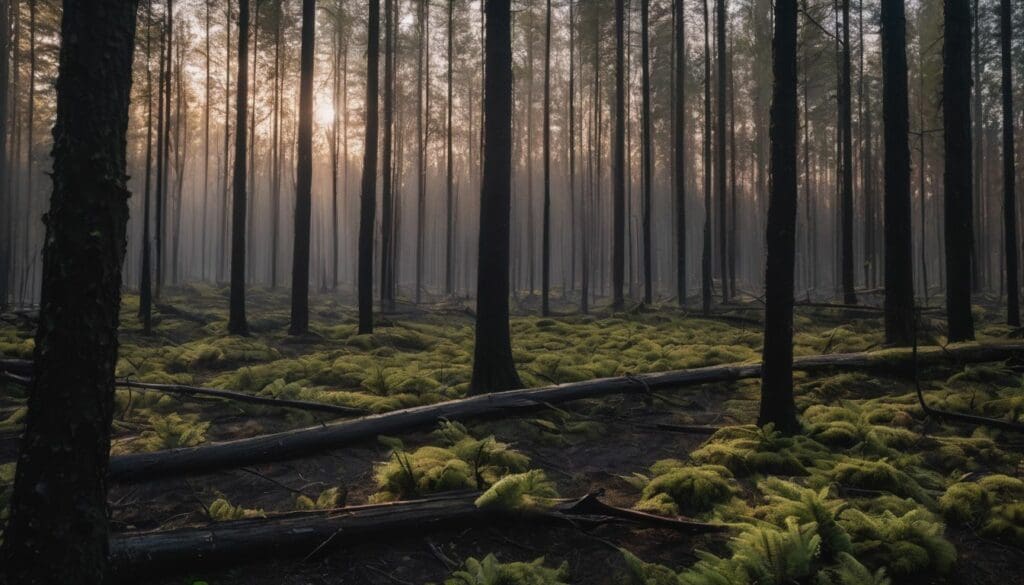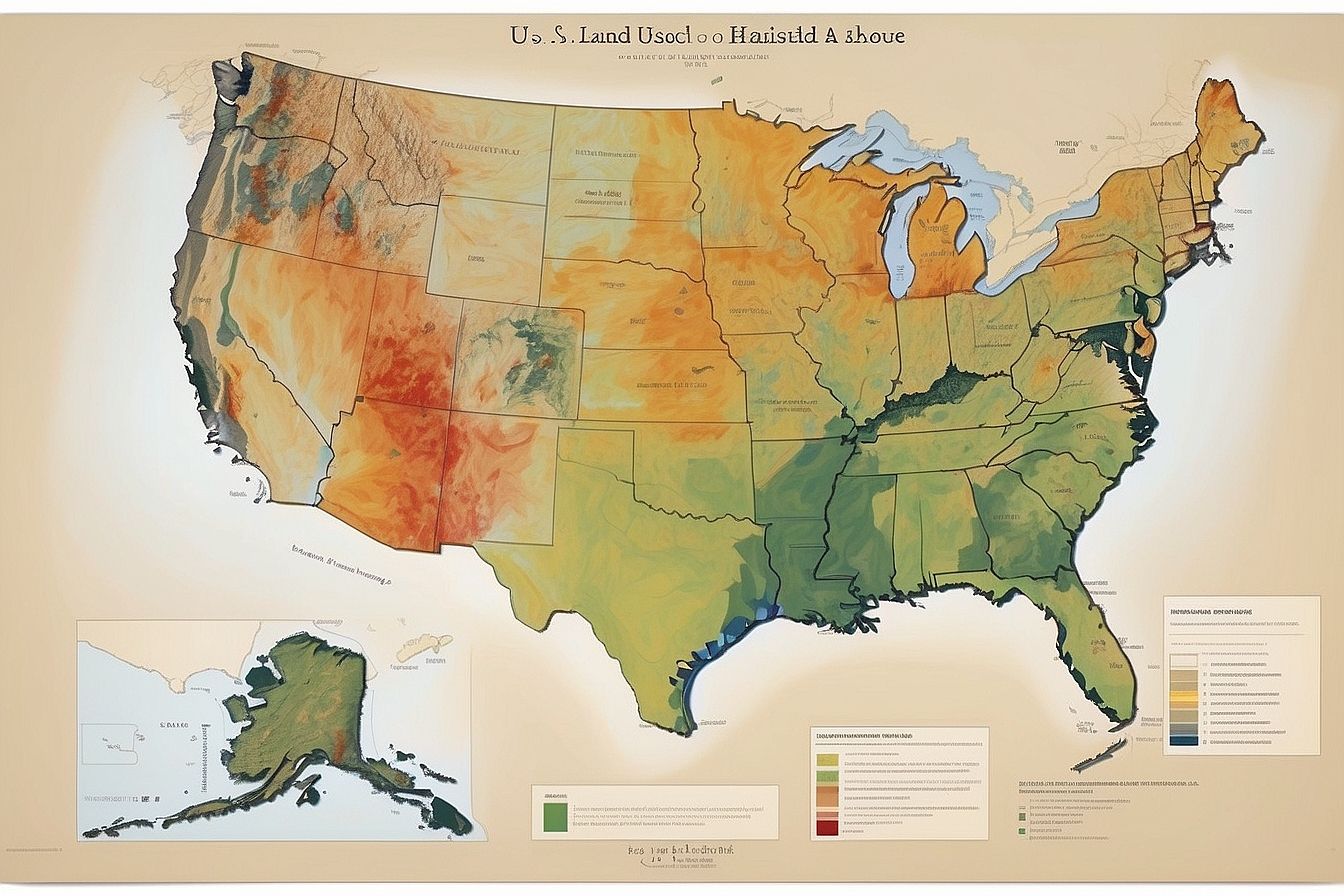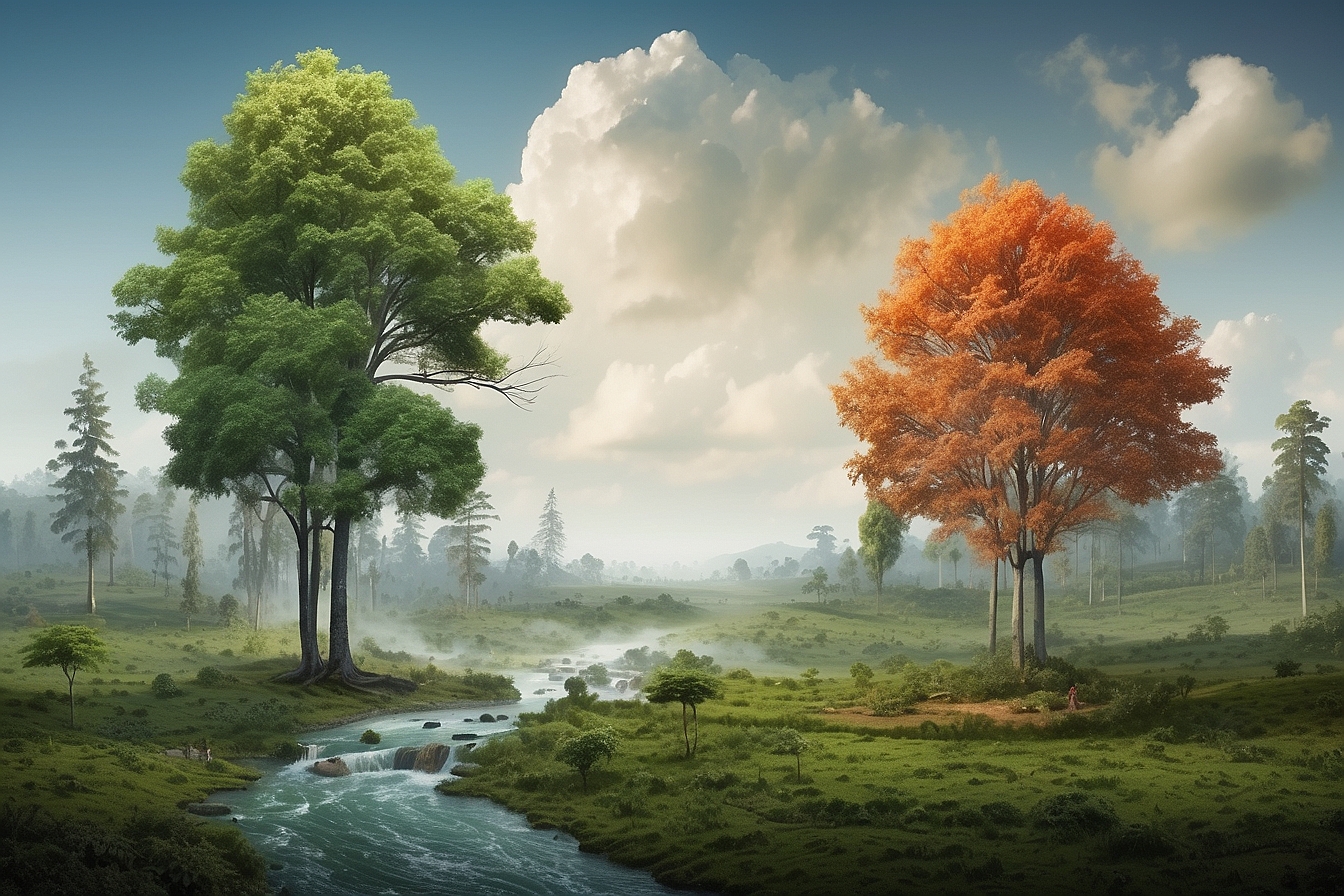As we witness the rise of wildfires across our precious planet, our hearts go out to the ravaged landscapes and shattered communities left in their wake. It’s quite startling to realise that a single wildfire has the power to pump millions of tonnes of carbon dioxide into our already fragile atmosphere.
Yet, amidst this troubling picture, there lies a silver lining – fires do play a pivotal role in some natural ecosystems. Our thorough exploration delves into both sides of this fiery coin.
Join us as we seek understanding amid the smoke; let’s unravel together how fire can be both a fierce foe and an unexpected ally in shaping the world around us.
Key Takeaways
- Wildfires can devastate ecosystems by destroying habitats and leading to loss of biodiversity, with consequences lasting for decades.
- The removal of vegetation during wildfires results in soil erosion and poor water quality, harming both natural surroundings and human communities.
- Air quality deteriorates due to the smoke produced by fires, posing health risks especially to those with respiratory issues, while also contributing to climate change through greenhouse gas emissions.
- However, controlled burns reduce forest diseases and help maintain healthy ecosystems by clearing out dead wood that might harbour pathogens.
- Wildfires play a crucial role in renewing the forest floor by releasing nutrients from burned plant material, which supports new growth and improves ecological diversity.
Negative Environmental Effects of Wildfires
Wildfires have devastating effects on the environment, causing widespread ecosystem damage and soil erosion. Air pollution from wildfires can also have long-term impacts on air quality and human health.
Ecosystem Damage
Wildfires strip forests of their life, decimating habitats and leaving behind a barren landscape. They wreak havoc on ecosystems, contributing to the loss of biodiversity as plants and animals are unable to survive the intense heat and destruction.
Our wildlife finds itself without homes or food sources, pushing species towards endangerment or extinction. The ripple effects extend far beyond the burn zone, influencing ecological balances that can take decades to restore.
We witness significant changes in water quality as ashes and debris infiltrate streams and rivers post-fire. This not only impacts aquatic life but also communities relying on these waters for their daily needs.
Soil becomes fragile without vegetation to anchor it down; thus we see increased soil erosion following wildfires—it’s a devastating cycle of environmental damage. Moving forward, let’s consider “Soil Erosion” as another critical consequence of unrestrained forest fires.
Soil Erosion
As wildfires burn through vegetation, they leave behind scorched land that is vulnerable to soil erosion. With the protective cover of plants and trees destroyed, the soil becomes susceptible to being washed away by rainwater or blown away by wind.
This loss of topsoil can lead to reduced fertility and productivity of the land, impacting both natural ecosystems and agricultural areas. Additionally, soil erosion can result in sedimentation in water bodies, affecting water quality and aquatic habitats.
The aftermath of wildfires often leaves the ground exposed and unable to withstand natural elements like rainfall which leads to significant soil erosion. This process not only affects the immediate landscape but also has far-reaching impacts on surrounding ecosystems and human communities.
Air Pollution
Wildfires release harmful pollutants into the air, including ash, carbon monoxide, and nitrogen oxides. These pollutants can degrade air quality and pose serious health risks to both humans and wildlife.
The smoke from wildfires can travel long distances, affecting communities far beyond the fire’s immediate vicinity. People with respiratory conditions are particularly vulnerable to the effects of wildfire smoke, which can exacerbate symptoms such as coughing and difficulty breathing.
In addition to harming human health, air pollution from wildfires can also impact ecosystems by damaging vegetation and disrupting natural habitats for wildlife. Furthermore, the release of greenhouse gases like carbon dioxide contributes to climate change, amplifying the environmental challenges posed by wildfires.
Positive Environmental Effects of Wildfires
– Controlled burns help decrease disease in forests by clearing out dead and diseased vegetation, allowing healthier plants to thrive.
– Wildfires renew the forest floor by releasing nutrients from burned plant material, promoting new growth and diversity in the ecosystem.
Decreases Disease
Wildfires can decrease disease by clearing out dead and diseased vegetation that may be a source of harmful pathogens. This controlled burn reduces the risk of diseases spreading among plants and animals, helping to maintain a healthier ecosystem overall.
In addition to decreasing disease, wildfires can also renew the forest floor as part of their positive environmental effects. The ash left behind after a fire contains essential nutrients that promote new plant growth, contributing to the regeneration of the ecosystem.
Moving on to “Renews the Forest Floor”, let’s explore how wildfires play an important role in revitalising natural habitats.
Renews the Forest Floor
After wildfires, the forest floor is renewed as a result of the ash acting as a natural fertiliser. This process enriches the soil and promotes new growth, creating opportunities for diverse plant species to thrive.
The rejuvenation of the forest floor also provides essential habitat and food sources for wildlife, contributing to ecosystem recovery and supporting biodiversity in the affected areas.
Furthermore, by clearing out dead vegetation and opening up space and sunlight, wildfire-affected areas can allow for new seedlings to take root and grow. This regeneration process helps in maintaining healthy forests while enhancing overall ecological resilience.
Benefits to Trees
Wildfires benefit trees by clearing out the overcrowded underbrush, allowing younger trees to access more sunlight and nutrients. This helps in the forest’s regeneration process, promoting new growth and enhancing overall biodiversity.
The heat from a wildfire also opens up the seeds of certain tree species, encouraging germination and aiding in natural reforestation.
The removal of older vegetation during a wildfire creates space for new trees to thrive. In turn, this supports healthy woodland ecosystems and robust wildlife habitats. Forests that have experienced controlled burns tend to be more resistant to future wildfires, as they are less likely to become fuel-dense areas prone to uncontrollable blazes.
Conclusion
Understanding the impact of wildfires on land and life is crucial for all of us. We need to be aware of both the negative and positive effects they have on our ecosystems. By acknowledging these impacts, we can work towards effective strategies for managing wildfire risks, protecting our environment, and preserving biodiversity.
It’s essential to stay informed and take action in preventing and mitigating the destructive consequences of wildfires. Let’s strive to create a safer future for our planet and its inhabitants.
FAQs
1. How do wildfires affect our ecosystems?
Wildfires can lead to ecological devastation by destroying habitats, but they also play a role in tree regeneration and can be beneficial when controlled burns are used strategically.
2. What happens to animals during forest fires?
During wildfires, many animals suffer from habitat destruction or displacement, which can negatively impact biodiversity and wildlife populations.
3. Can anything good come out of wildfires?
Controlled burns have positive effects; they help prevent larger fires by removing excess vegetation and can improve ecosystem health by promoting new growth.
4. Why is it important to manage wildfire risks?
Managing wildfire risk through fire prevention strategies helps protect communities and reduces the environmental impact of uncontrolled forest fires.
5. What actions do emergency response teams take during wildfires?
Emergency response teams act quickly during wildfires to minimise the impact on ecosystems, help displaced wildlife, and safeguard human communities from the consequences of wildfires.





